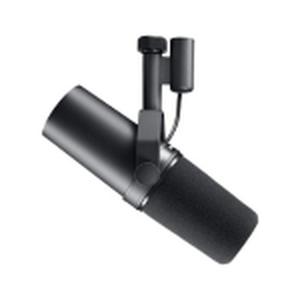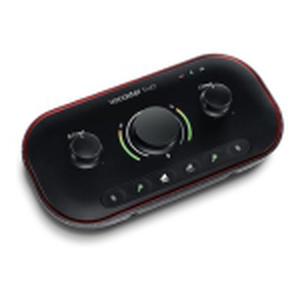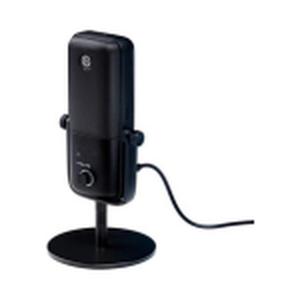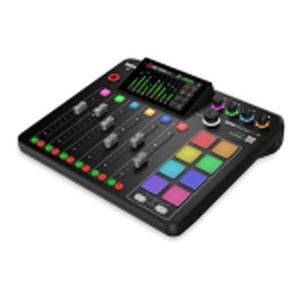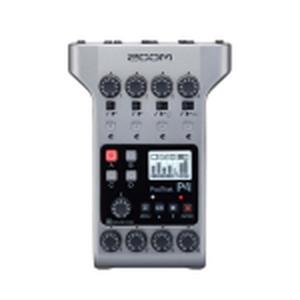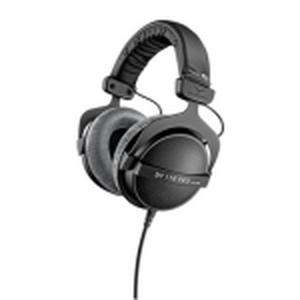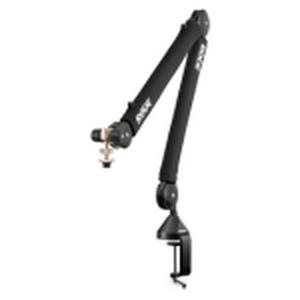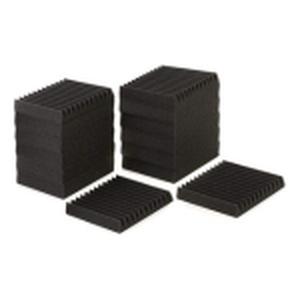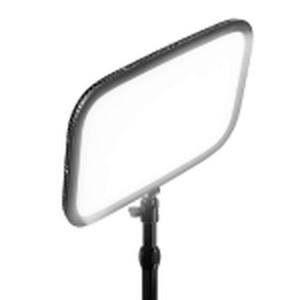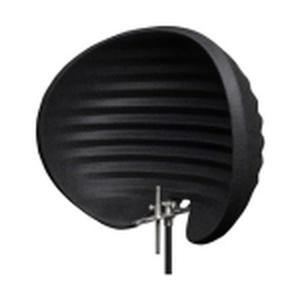Having tested hundreds of tech products over the years, I’ve recently noticed a significant surge in interest around podcast equipment. After spending months reviewing various podcast studio setups and testing countless combinations of gear, I’ve put together this comprehensive guide to help you build your ideal podcast studio.
What makes podcast equipment particularly interesting is how the right combination of gear can dramatically improve your sound quality without requiring a professional studio space. Throughout my testing journey, I’ve identified the essential pieces that truly make a difference in podcast production, separating the must-haves from the nice-to-haves.
In this guide, I’ll share my top 10 picks for podcast equipment that have consistently impressed me during extensive testing. Each item has been evaluated based on sound quality, ease of use, build quality, and value for money.
Table of Contents:
Top 10 Essential Devices for Your Podcast Studio
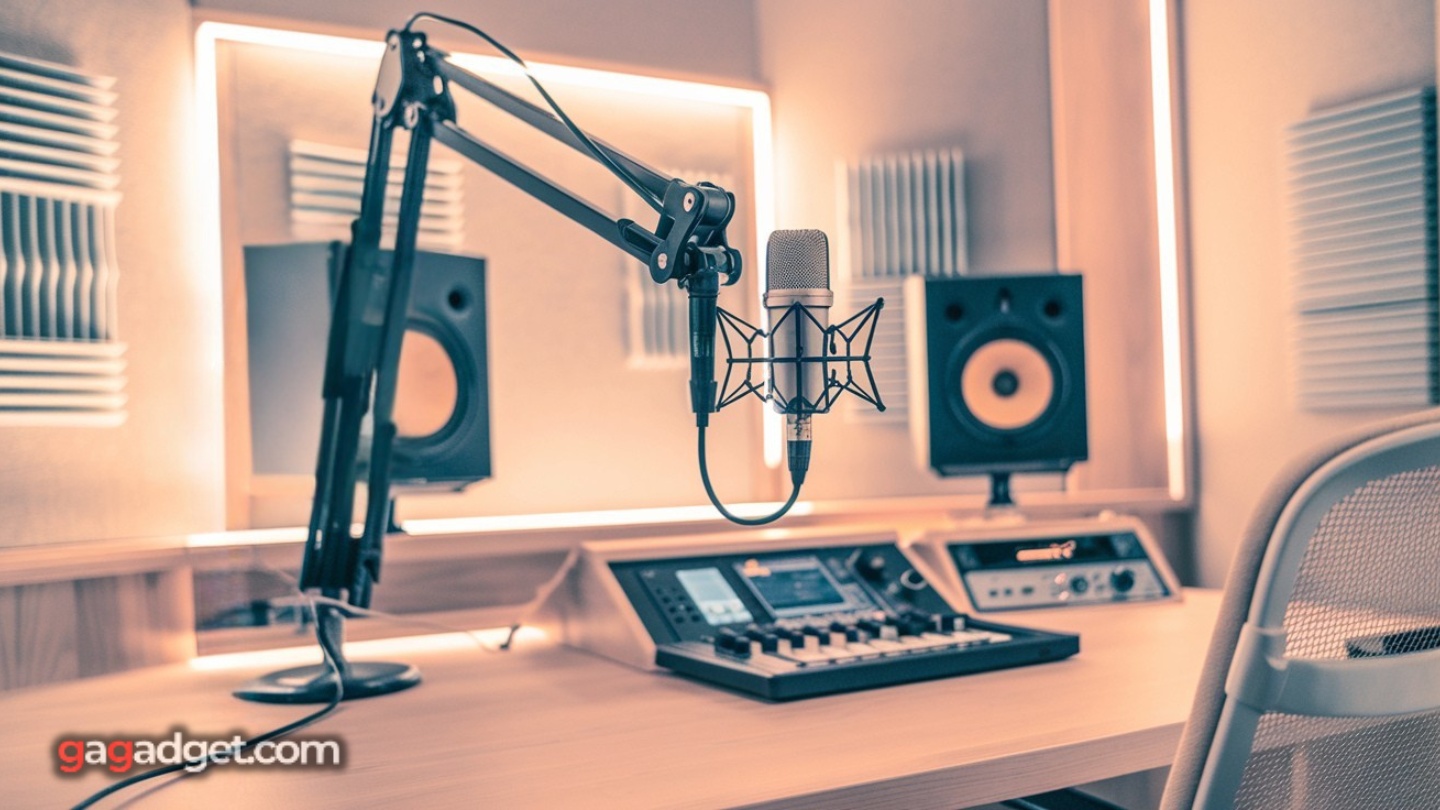
Image of podcast studio equipment setup. Source: Canva
Here are the best podcast studio equipment options I’ve tested that can help you create professional-quality content from day one.
1. Shure SM7B Dynamic Microphone
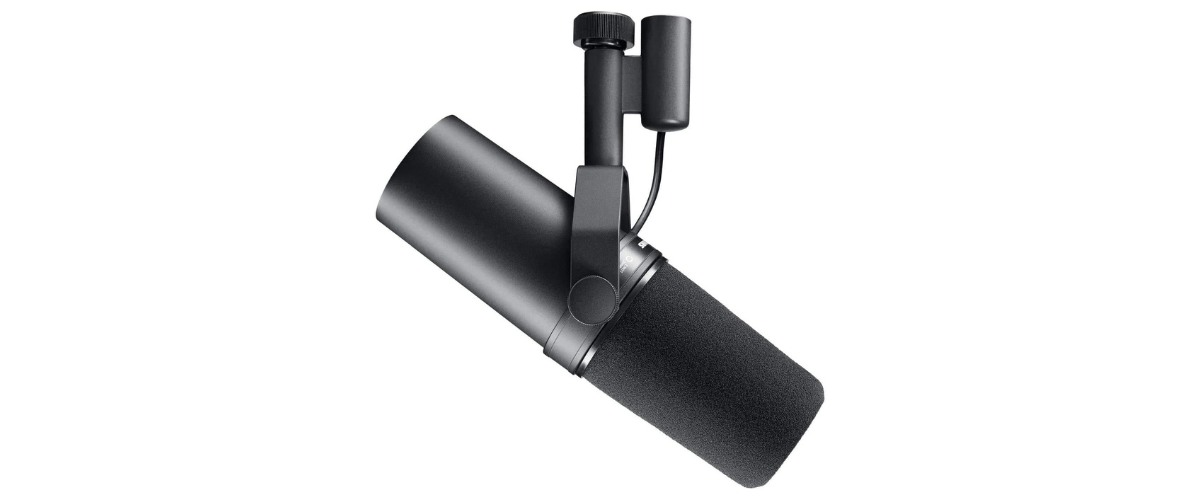
Screenshot of the Shure SM7B. Source: Amazon
The Shure SM7B is celebrated worldwide for delivering a warm, articulate, and highly detailed sound—making it one of the most popular microphones in both professional broadcast studios and independent podcast setups. Its dynamic design requires no external power, and the unit’s robust build ensures it can handle the demands of daily recording and travel. Equipped with excellent off-axis rejection, it helps you maintain a clean vocal track even in rooms that haven’t been fully acoustically treated.
Moreover, the SM7B has an internal pop filter and advanced electromagnetic shielding, minimizing unwanted noise from plosives, mic rumbles, and nearby electronic devices. Its iconic shape and matte black finish also make it an aesthetically pleasing addition to any studio. While it’s known for being a dynamic mic that loves a decent amount of gain, pairing it with a high-quality audio interface or mic booster can make all the difference.
During my extensive testing, the SM7B consistently outperformed other microphones in its price range, particularly in terms of vocal clarity and background noise rejection. The built-in shock mount and pop filter mean you won’t need to purchase these accessories separately, making it a more cost-effective solution than it might appear at first glance.
Pros:
- Exceptional vocal clarity and warmth
- Built-in pop filter and shock mount
- Superior background noise rejection
- Durable, professional-grade construction
- Versatile for different voice types
Cons:
- Requires significant gain boost
The Shure SM7B represents the gold standard in vocal microphones, combining superior sound quality, durability, and professional features in a package that will serve your podcast studio for years to come.
2. Focusrite Vocaster Two Audio Interface
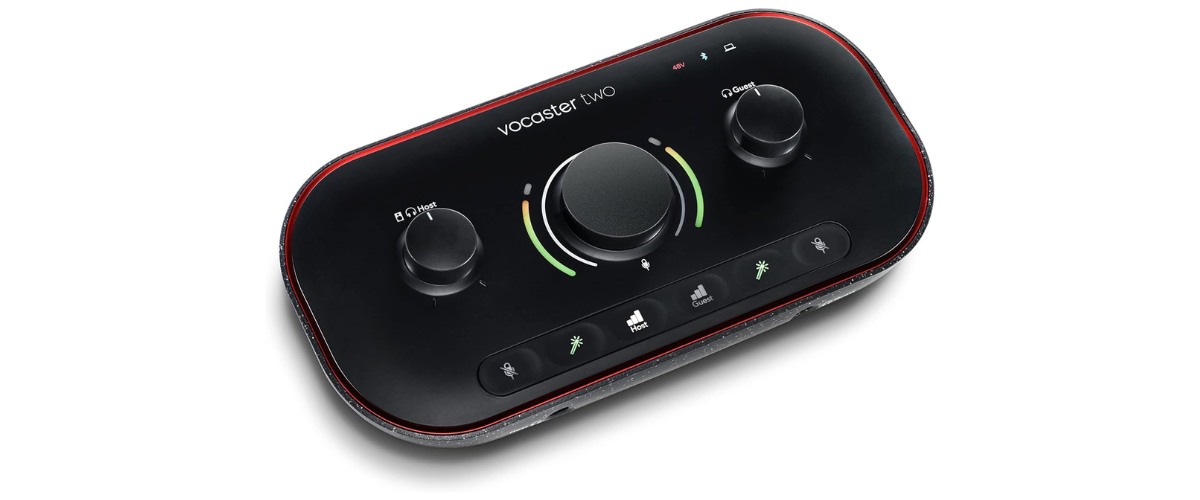
Screenshot of the Focusrite Vocaster Two Audio Interface. Source: Amazon
The Focusrite Vocaster Two is designed explicitly with podcasters in mind, aiming to simplify your workflow while ensuring top-tier sound quality. Its intuitive layout features large gain knobs and a clear LED gain meter, allowing you to set microphone levels accurately in seconds. One standout feature is the Auto Gain function, which analyzes your voice and automatically sets the ideal input level.
Beyond the basics, Focusrite has built upon its reputable mic preamps, known for delivering clarity and low noise. The Vocaster Two includes two microphone inputs, each with its own headphone output—essential for co-hosted shows or interviews. It’s also compact enough to slip into a small bag, making it a great companion for on-the-go recordings.
In my testing, the Vocaster Two proved particularly valuable for its ability to maintain consistent audio levels across different recording scenarios. The auto-gain feature saved considerable setup time, especially when recording with guests who might not be familiar with proper mic technique.
Pros:
- Intuitive auto-gain functionality
- Dual XLR inputs with separate headphone outputs
- Compact and portable design
- Clear, simple control layout
- High-quality preamps
Cons:
- Limited routing options compared to mixers
- Software features could be more extensive
The Focusrite Vocaster Two strikes an excellent balance between professional features and user-friendly operation, making it an ideal choice for both beginners and experienced podcasters who value simplicity and sound quality.
3. Elgato Wave:3 USB Condenser Microphone
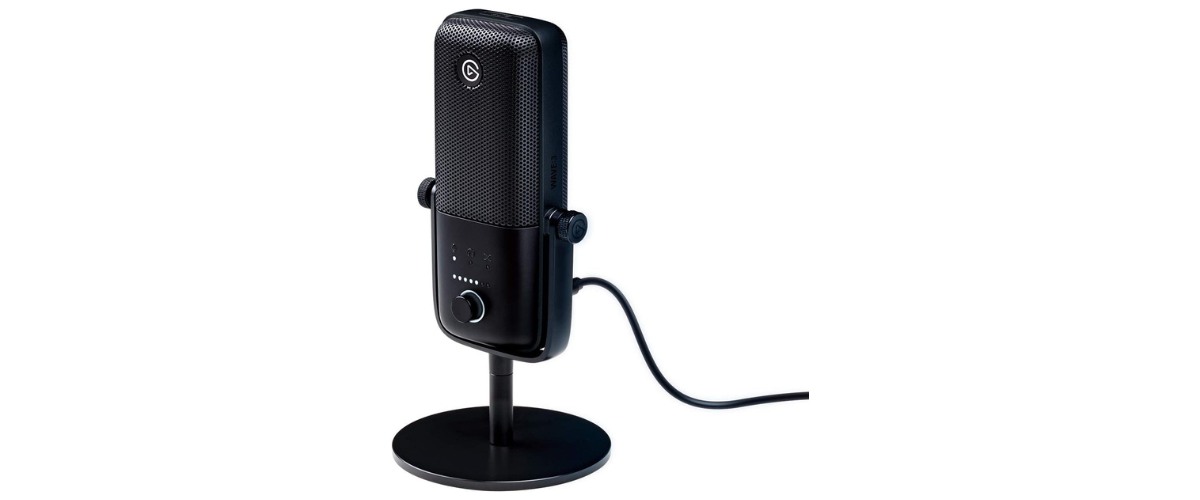
Screenshot of the Elgato Wave:3. Source: Amazon
The Elgato Wave:3 offers plug-and-play functionality while delivering studio-quality sound. Right out of the box, you can connect it directly to your computer without needing a separate audio interface. Its 24-bit/96kHz audio resolution ensures a crisp, detailed capture of your voice, while the internal Clipguard technology prevents distortion if you unexpectedly speak or laugh louder than normal.
A built-in capacitive mute button on the top of the microphone allows you to silence your mic instantly—a big plus for live broadcasts or when managing multiple guests. The stylish design sits comfortably on most desks, but pairing it with a boom arm can further enhance your setup and reduce desk noise.
During my testing, the Wave:3’s Clipguard technology proved particularly impressive, consistently preventing audio distortion even in dynamic conversations. The Wave Link software adds another layer of functionality, effectively turning your desktop into a mini mixing station.
Pros:
- Superior USB audio quality
- Effective Clipguard technology
- Intuitive Wave Link software
- Sleek, modern design
- Easy setup process
Cons:
- Limited polar pattern options
- More sensitive to room noise than dynamic mics
The Wave:3 is an excellent choice for solo podcasters who want professional sound quality without the complexity of an XLR setup, offering a perfect balance of features and ease of use.
4. RODECaster Pro II Integrated Podcast Production Console
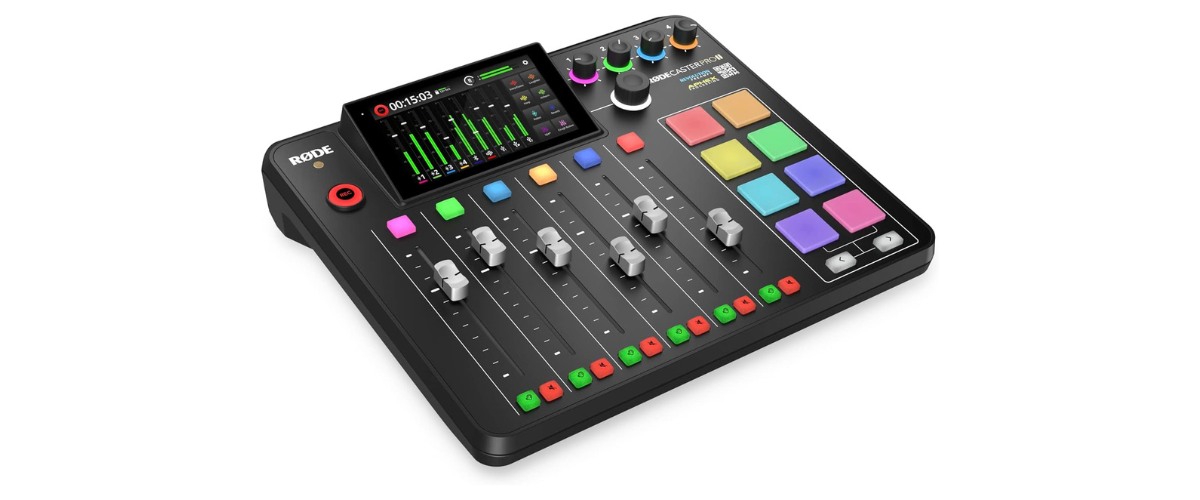
Screenshot of the RODECaster Pro II. Source: Amazon
The RODECaster Pro II represents a significant leap forward in podcast production technology. From the moment you power it on, you’re greeted by a vibrant, touch-sensitive screen that allows you to control mic levels, apply signal processing, and trigger sound effects or music beds—all without needing an external computer.
Additionally, the unit is equipped with multiple XLR-1/4-inch combo inputs, enabling you to record several microphones or instruments simultaneously. The high-gain preamps are exceptionally clean, which is crucial for ensuring consistent vocal quality across episodes. Each channel comes with built-in processing options like compression, EQ, and de-essing.
During testing, the eight fully customizable SMART pads proved invaluable for live production, allowing instant playback of intros, sound effects, and sponsor messages with just a tap. The ability to record directly to a microSD card or stream live through USB adds impressive versatility to your recording options.
Pros:
- Professional-grade audio processing
- Intuitive touchscreen interface
- Multiple recording and streaming options
- Customizable SMART pads
- High-quality preamps
Cons:
- Significant learning curve
The RODECaster Pro II is a complete podcast studio in a single unit, perfect for podcasters who want professional-level control and are willing to invest in their setup.
5. Zoom PodTrak P4 Portable Podcast Recorder
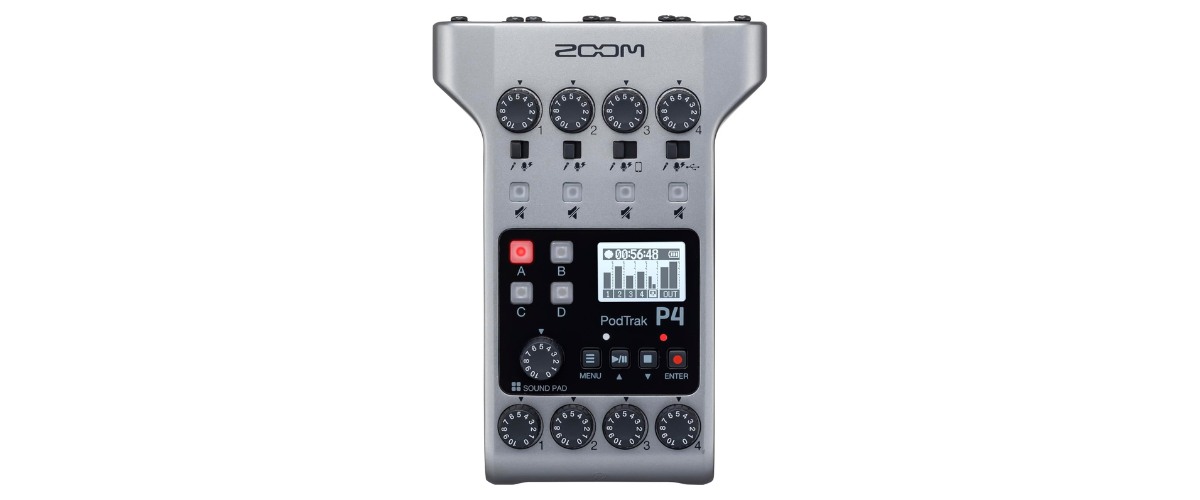
Screenshot of the Zoom PodTrak P4. Source: Amazon
The Zoom PodTrak P4 stands out as an invaluable tool for podcasters who need mobility without sacrificing quality. Its compact footprint and lightweight design make it ideal for travel, remote interviews, or on-site events. Despite its small size, it delivers robust functionality with four microphone inputs—each with independent gain controls and phantom power.
What sets the PodTrak P4 apart is its ability to record directly to an SD card, eliminating the need for a laptop. This feature, combined with the option to power it via AA batteries or USB, offers remarkable flexibility in various recording environments. The built-in mix-minus feature for phone interviews is particularly impressive, preventing echo and feedback issues.
In my field testing, the P4 proved incredibly reliable, handling everything from impromptu street interviews to full panel discussions. The separate headphone outputs for each participant ensure everyone can monitor their audio clearly.
Pros:
- Highly portable design
- Four independent mic inputs
- Flexible power options
- Built-in mix-minus for phone calls
- Simple, intuitive controls
Cons:
- Limited processing options
- Basic display interface
The Zoom PodTrak P4 is the perfect solution for podcasters who need professional-quality recording capabilities in a portable package.
6. Beyerdynamic DT 770 PRO Studio Headphones
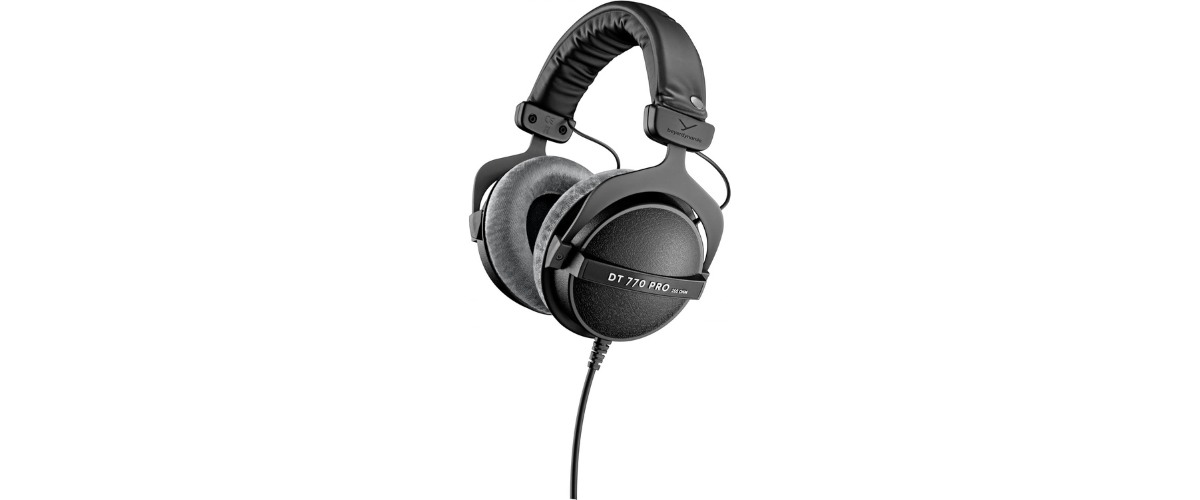
Screenshot of the Beyerdynamic DT 770 PRO. Source: Amazon
The Beyerdynamic DT 770 PRO headphones are a staple in professional audio production for good reason. Built to endure daily studio use, their closed-back design provides excellent isolation, ensuring you catch every detail without audio bleed into your microphone—crucial for maintaining clean recordings during podcast sessions.
Comfort is a standout feature with these headphones. The plush velour ear pads and adjustable headband allow for extended wear during long recording or editing sessions. During my testing, I could comfortably wear them for 6+ hour editing marathons without any discomfort.
The frequency response is remarkably well-balanced, offering detailed highs and controlled bass that doesn’t overshadow the critical mid frequencies where vocal clarity lives. This balanced sound signature makes them perfect for both monitoring during recording and detailed editing work.
Pros:
- Exceptional sound isolation
- Superior comfort for long sessions
- Accurate, balanced audio reproduction
- Durable build quality
- Replaceable parts available
Cons:
- Non-detachable cable
- Bulky for travel
The DT 770 PRO represents an excellent investment for any podcaster serious about audio quality, offering professional-grade monitoring capabilities that will serve you well for years.
7. Rode PSA1+ Boom Arm

Screenshot of the Rode PSA1+. Source: Amazon
The Rode PSA1+ demonstrates how a seemingly simple accessory can significantly improve your podcasting setup. Its well-engineered internal spring mechanism allows for smooth, precise microphone positioning, while the robust construction keeps your microphone exactly where you place it without sagging or drifting.
The integrated cable management system is particularly impressive, neatly routing cables along the arm to maintain a clean, professional appearance. In my testing, this feature proved invaluable for reducing cable noise and preventing accidental tugs on connected equipment.
With a weight capacity of up to 2.7 pounds, the PSA1+ easily handles popular broadcast microphones like the Shure SM7B. The included mounting options (desk clamp and grommet) provide flexibility for different setup configurations.
Pros:
- Smooth, silent operation
- Excellent cable management
- Strong weight capacity
- Multiple mounting options
- Professional build quality
Cons:
- Requires substantial desk space
The PSA1+ is more than just a mic stand—it’s a professional tool that enhances both the functionality and aesthetics of your podcast setup.
8. Auralex Studiofoam Acoustic Panels
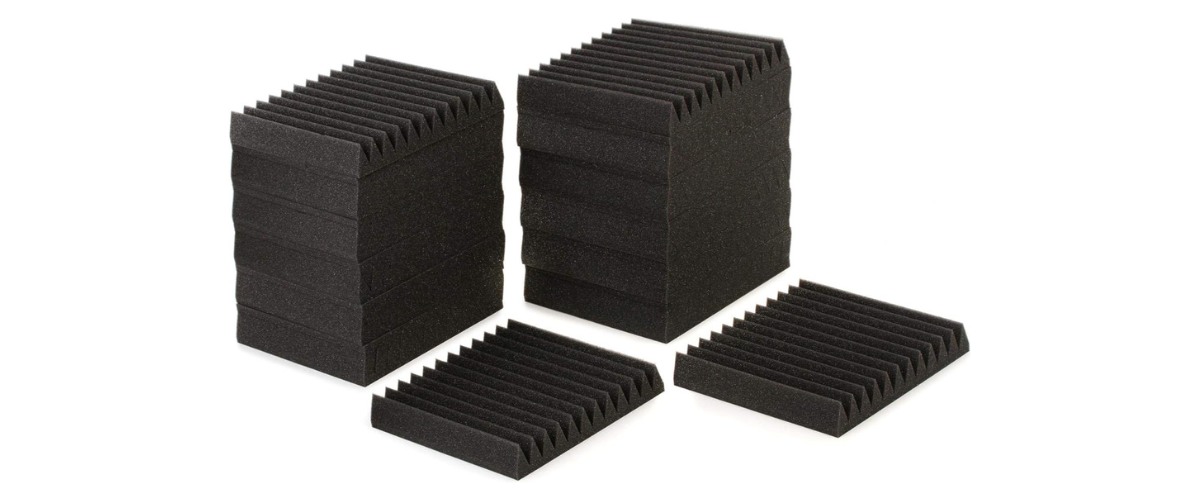
Screenshot of the Auralex Studiofoam. Source: Amazon
The Auralex Studiofoam panels represent the foundation of professional acoustic treatment. These high-density foam panels effectively tame room reflections and reverberations that can muddy your recordings. In my testing across different room sizes, these panels consistently improved vocal clarity and reduced unwanted room echo.
Installation is straightforward with the included mounting options, and the panels’ distinctive sculpted surface adds a professional studio aesthetic to your space. The variety of available shapes and thicknesses allows you to customize your acoustic treatment based on your specific room challenges.
What impressed me most during testing was how well these panels maintained their shape and acoustic properties over time, showing no signs of degradation even after months of use in varying environmental conditions.
Pros:
- Effective sound absorption
- Professional studio appearance
- Multiple configuration options
- Durable construction
- Easy installation
Cons:
- May require wall modification
For podcasters looking to achieve professional sound quality, Auralex Studiofoam panels are an essential investment in your recording space.
9. Elgato Key Light
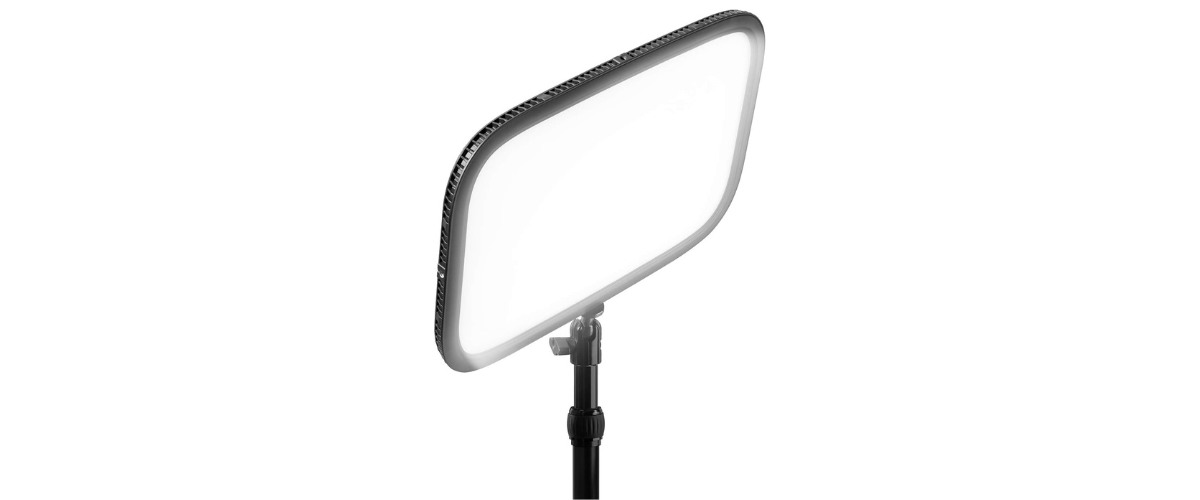
Screenshot of the Elgato Key Light. Source: Amazon
The Elgato Key Light proves invaluable for podcasters who also create video content or stream. Using edge-lit LED technology, it provides soft, diffused lighting that eliminates harsh shadows and creates a professional look on camera. The desk-mounted design saves valuable floor space and offers more positioning flexibility than traditional lighting setups.
Control is seamless through the Elgato Control Center software, allowing you to adjust brightness and color temperature from your computer or phone. You can save presets for different times of day or recording scenarios, ensuring consistent lighting across all your content.
The light’s flicker-free operation particularly impressed me during testing, as it prevented the eye strain and fatigue often associated with lower-quality LED lighting during long recording sessions.
Pros:
- Professional-grade illumination
- Space-saving desk mount
- Customizable via software
- Flicker-free operation
- Wide brightness range
Cons:
- Software required for full control
The Elgato Key Light is an excellent investment for podcasters who want to ensure their video content matches the professional quality of their audio.
10. Aston Microphones Halo Reflection Filter
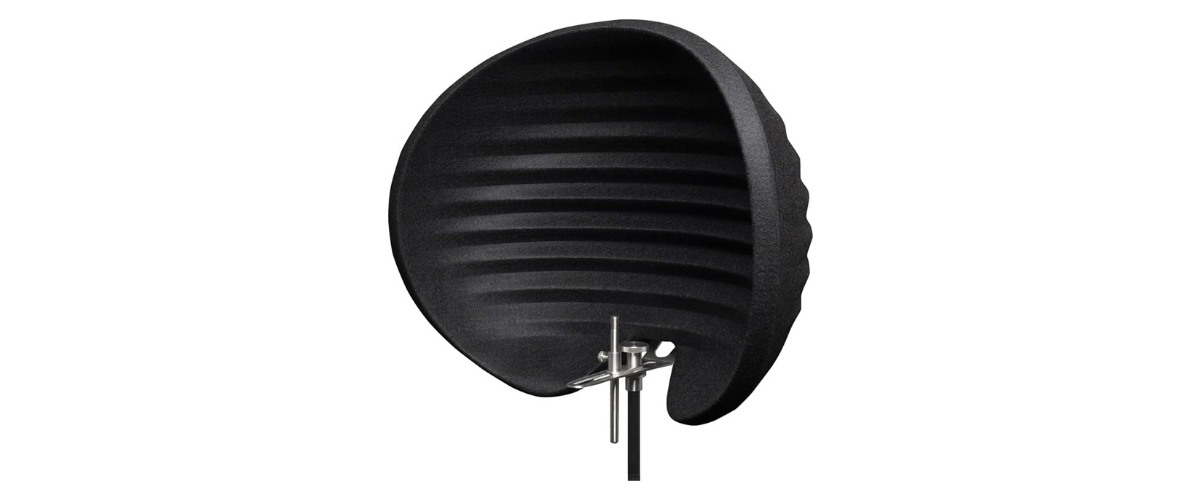
Screenshot of the Aston Microphones Halo Reflection Filter. Source: Amazon
The Aston Halo provides an innovative solution for podcasters who need acoustic treatment but can’t modify their recording space. Its unique curved design effectively captures unwanted room reflections before they reach your microphone, resulting in cleaner, more focused vocal recordings.
The patented PET felt construction offers excellent absorption of mid and high frequencies while being surprisingly lightweight. During my testing, I found the difference in vocal clarity immediately noticeable, especially in untreated rooms with problematic acoustics.
Installation is straightforward with universal mounting hardware, and the adjustable design accommodates various microphone positions and recording styles. It’s particularly effective for those who record in different locations or share recording spaces.
Pros:
- Excellent acoustic isolation
- Lightweight, portable design
- Universal mounting system
- High-quality construction
- No room modification needed
Cons:
- Takes up significant desk depth
- Can be awkward to transport
The Aston Halo is a valuable tool for podcasters seeking professional sound quality in less-than-ideal recording environments, offering a portable solution to acoustic treatment challenges.
Final Thoughts on Building Your Podcast Studio
Creating a professional podcast studio doesn’t have to be overwhelming. By focusing on these essential pieces of equipment, you can build a setup that delivers excellent audio quality while maintaining a streamlined workflow. Remember that you don’t need to purchase everything at once – start with the basics like a quality microphone and interface, then gradually expand your studio as your needs and budget allow.
The key is choosing equipment that not only performs well but also works together seamlessly. Whether you’re just starting out or looking to upgrade your existing setup, these tools will help you create professional-quality content that keeps your listeners engaged.


